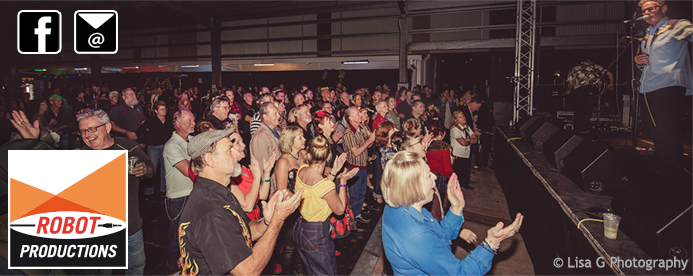
|
|
|
Rockabilly Rules in Japan OK - Lori Lee in Japan November 2008
In 2007 I made my first visit to
Japan and was totally blown away by the people and their countless range
of sub-cultures. Of course the rockabilly scene is of particular interest
to me, and you if you are reading this. The Japanese cats are into
the same music as we are and they have many ways of expressing their love
of rockabilly and all things vintage Americana. If you didn�t catch last
year�s review, please read my Cool Cats Rock Tokyo blog here
www.robot.com.au/Japan_Rockabilly.htm to come up to speed. All I wanted
after that visit was get back to Japan as soon as possible to witness
their kustom auto scene. |
|
| One Cup of Coffee and a Cigarette There are tens of thousands of restaurants in Japan. Everyone eats out. Most restaurants still allow smoking inside which is a head spin. It is the exact opposite of how our rules are in Australia. There is no smoking on the street, if you want to smoke you have to go inside a restaurant, bar or café! The food is simple and tasty, if a bit unusual. Most day to day restaurants have picture menus, although interpreting the pictures can be guesswork too. In the very first restaurant we sat down in, the waiter handed me a scanning wand and showed me how to order via the bar code beside each menu photo. More traditional eateries write their menus and prices in Japanese script, so we had to order via sign language, with two fingers firmly crossed for luck. They dig vending machines in Japan, there are around 6 million vending machines – or one per 23 people. Some restaurants have a vending machine instead of a waiter. You feed your money into the slot, press a button, get a ticket and two minutes later you are devouring a hot dish of noodles. As well as the Japanese sashimi, soups, grills and noodles, we tried the Japanese versions of Italian, Thai, Chinese and Western cooking, to varying degrees of success. We spotted a Mexican restaurant in the maze of eateries in Osaka and had a delicious but compact version of a Mexican meal. The Japanese owner paid special attention to his Australian guests and our cowboy shirts. After our meal, he and his chef strapped on guitars and harmonized a delightful Mexican song at our table, while next to us other Japanese diners were filming with their mobiles. You can always get beer anywhere in Japan - at a restaurant or café, the local 7-11 or of course from a vending machine. Asahi seems to be the most popular choice. In the early mornings you could spot the beer being delivered to the eateries by bicycle! The delivery person straps a small keg to the parcel tray and peddles his way through the tiny streets. |
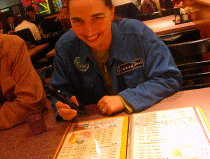 Order by bar code on this menu
Order by bar code on this menu
|
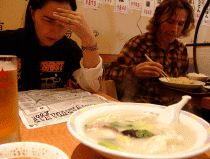 Studying a 'rockabilly map' for Tokyo
Studying a 'rockabilly map' for Tokyo
|
|
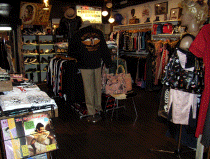 Inside 'Tommy Gun' in Osaka |
|
| Bop Shops
The rockabilly shops in Japan are totally
hip, stocking some way-cool ranges of clothing, but don’t expect anything
to fit, as their sizes are petite. The vintage stores stock only the best
50s rayon shirts with top notch prices tags to match. In Osaka there are a
handful of vintage shops within the American Mura (American Village)
district, such as Samantha’s Vintage, a rockabilly gal who spoke some
English and told me a story about how she danced with Big Sandy while in
the USA. In Tokyo, the bulk of the cool clothing shops are in Harajuku and
Shibuya, the record stores are in Shinjuku. |
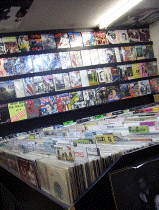 Vinyl Japan record store Tokyo |
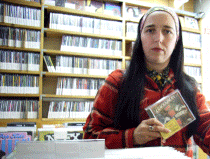 Crackajacks cd, one of the Aussiebilly choices in Tokyo |
|
| Moon Rocks
At the first ever GreazeFest in Kingscliff
in 2000, I met Shige Suganuma from Moon, who published a review of the
GreazeFest in the Japanese magazine, Cruisin Supreme. Ten years later I
witnessed one of Shige’s own shows in his homeland of Japan, and what a
great show it was. Thankfully we had advance tickets, so we bypassed the line up and made our way inside in time to witness the guest introductions that signal the start of the show. The display area had a drive-in sectioned off so the guest vehicles can drive into the show, as a Moon commentator (and an English interpreter) introduces them. The guests came from the USA and included James Hetfield and a 53 Buick ‘Skyscraper’ (or Skysklaper); Jimmy Shine and the So Cal built 57 Chev Gasser (watch it getting built on his cable tv show); and a gang of bikes from Cole Foster, Max Schaaf, Jasin Phares, Tom Foster, Mark Drews, John Edwards, Rico Fodrey. The crowd lining the driveway was eight deep with a sea of arms in the air holding cameras and all leaning in! I’m not too tall on the best of days, so I squeezed through to the front mumbling sumi-masen, sumi-masen (sorry, sorry). This intro-ritual was exciting and well coordinated, but I had to gulp when Tom Foster gunned the throttle briefly and his tyre skidded on the polished concrete surface. I had visions of audience members turning into skittles. Leaving the formalities behind, I started to make my way around the show to take some photos before it got too crowded. As expected, Custom Toyota Crowns featured from the mild to the wild, plus stock and custom Chevs and Caddys, there was a row of sleds, vee dubs, muscle cars, street rods, rat rods, pick ups, vans, cool lowrider bikes and model cars. The stars of the show belonged to the hundreds and hundreds of motorbikes. Bikes came in all shapes and forms, all with a high level of style, perfection and finish. Please check the photos in the youtube movie above. It occurred to me that the custom bike culture is far more accessible to the Japanese than the car culture, presumably due to space limitations. There were so many great looking machines on show it just made your head spin. After walking around on concrete for five hours, we stepped outside to the freezing bayside day and saw all the streets around the centre lined with more custom bikes! There were two wheeled wonders blapping up and down the road making the district come alive with an exciting vibe. Gidday Here's a big gidday to everyone we met at the Yokohama show, people from all around the globe - France, USA, Mexico, Switzerland, Germany and Brisbane! Check the awards page from the Moon web site: www.mooneyes.co.jp/hcs08/award.html |
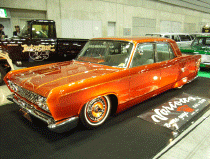 Custom Crown from the 'Various Bogus Guys Car Club' |
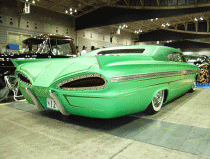 My fav, a kustom Dodge Dart |
|
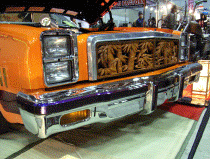 77 El Camino with carved tiki grill |
|
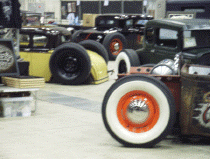 Rat Island |
|
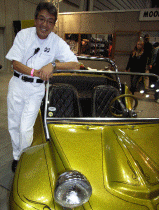 Mr Moon, Shige Suganuma |
|
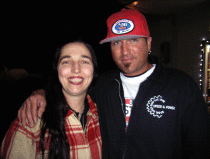 Lori Lee and Jimmy Shine |
|
Lori Lee's photos from
Yokohama Hot Rod Show and more |
|
|
Saturday Night in Tokyo Rockabilly is a healthy scene in
the major cities in Japan and during the Winter, when we were there, the main night of
the week to rock is Saturday. No matter where you are in the world, there
is only one Saturday night per week, so you have to be lucky with your
timing. I wasn�t so lucky on this trip and missed out on seeing the
excellent Yuichi &
The Hilltone Boys (sings like Big Sandy) as I was leaving town that
morning, and then I missed a 'Rockabilly Tournament� in Tokyo that night,
as Johnny
came down with a heavy dose of the flu. Dang and double dang! |
|
| Rock-n-Roll-Zoku | |
| The following day, I was determined to
catch the leather clad the rock-n-roll-zoku who dance in the street every
Sunday in Harajuku. I searched for the dancers on my last trip to Japan and frustratingly couldn’t find them. This year I headed to the renowned Yoyogi Park, where all types of people gather to hang out or walk to the temple in the park. I could see families in their best suits, kids in kimonos, Goths, ‘free hugs’ kids, and many other cos-play looks, but not a rocker in sight! So I simply hung out and waited attentively on a foot bridge, as thousands of Japanese people crammed the footpaths going about their Sunday business (in an orderly way). Finally, I spotted a greaser amongst the crowd and I quickly set off in his direction. He turned a corner to an open area and there they were, two dozen rockabillies, clad in head to toe leather, hanging out, drinking beer and smoking cigarettes. This custom of street dancing on a Sunday started in the 1970s, when takenoko-zoku, or ‘bamboo shoot kids’, wore brightly coloured jumpsuits and danced to their ghetto blasters. Another wave of dancers formed, the rock-n-roll-zoku, who dressed in leather and sported perfect quiffs. I remember watching a video of the rock-n-roll-zoku in the early 1980s and was fascinated by this public display of dancing by the mainly male rockers. It is even more fascinating to think they have been dancing every Sunday ever since, an admirable level of dedication. The custom of performing in the streets of Harajuku gained momentum through the 1990s and all types of live bands and dancers were turning out to perform on a Sunday. The noise and the interruption to the flow of pedestrian traffic caused the police to shut down their activities. But the rock-n-roll-zoku survived by moving to another location. On this day, the rock-n-roll-zoku were well equipped for what looked like a social afternoon. As well as bags of beer and belongings, they also had a portable generator, a huge speaker box, a cd player, a guitar and a full-length mirror. There were a few gals in the group, who wore full skirts and petticoats. No one was dancing when I arrived, they were simply hanging out as more and more zoku arrived, some who turned up in a 1970s Lincoln. Eventually the zoku set up their generator and started the music. The rock-n-roll-zoku men formed a circle and launched into an elaborate dance routine, mixing up the twist, the teddy boy bop and modern dance jumps and kicks. When the guitar solo arrived in each song, one of the zoku would move to the centre of the circle and do a freeform routine, as the rest of the gang snapped their fingers or clapped along to the beat. At the end of the solo, he would join the circle again and they’d all launch back into their twisting, air-guitaring, lyp-synching, shadow-boxing, high kicking boogie. Some of the songs on the rock box were in English and some were Japanese, such as a Japanese version of Roll Over Beethoven, which had the dancers going extra-crazy. I was so excited to finally be watching these cats do their thing and I had to hold myself back from running over and joining in! I didn’t gather any video of the day, but a quick search will show up plenty of youtube videos of these dancers (such as the one embedded here). In viewing these uploads and comments, it disappoints that not many people actually ‘get it’ or respect the zoku. To understand these rockers, it is best to be open-minded to the many ways the Japanese interpret rockabilly and don’t draw any line in the sand deciding what is considered cool and what is not. These fans are dedicated and entertaining, and are ‘doing their thing’ in a very public way. |
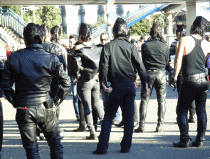 |
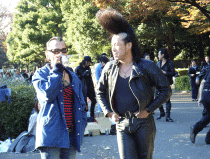 |
|
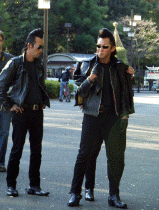 |
|
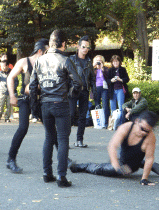 |
|
| If you are considering the Yokohama Hot Rod
Custom Car Show as a holiday destination next year or the one after, drop
me a line for more details. Keep an eye on the exchange rate between
Australia and Japan, as during my trip the rate was hopeless, so
everything was expensive. The higher the item price (such as hotels), the
more money you will sacrifice on the conversion. Also keep an eye on Jetstar for when they have their flight sales, most likely the cheapest
part of your trip will be the airfare, sometimes as little as $500 return.
Next time you are out, keep an ear out for some Japanese rockabilly tunes, I have gathered some killer tracks and am playing them at all the Robot gigs. Sayonara! Lori Lee o-[*_*]-o www.robot.com.au |
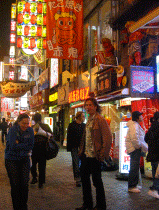 |
|
Links Japanese songs featured in the movie. Thank you to: www.myspace.com/yuichiandthehilltoneboys - Thunder www.myspace.com/tennesseecats - Sugaree Flamingo Express - See You Later Alligator Other bands mentioned above: www.myspace.com/hotdogbuddybuddy www.myspace.com/thekoolburns Cool Cats Rock Tokyo (Lori Lee visit 2007): www.robot.com.au/Japan_Rockabilly.htm Moon Japan: www.mooneyes.co.jp Rock'n'Roll Music Garden: www.rak2.jp/town/user/rnrmusicgarden Tommy Gun clothing store: http://www.tommygun.jp/ Yahoo web translator: babelfish.yahoo.com Club Doctor, nightclub in Tokyo: http://www.clubdoctor.co.jp/frame.html Tokyo Damage Report an insight into the Japanese underground: www.hellodamage.com/tdr/ |
|

|
|